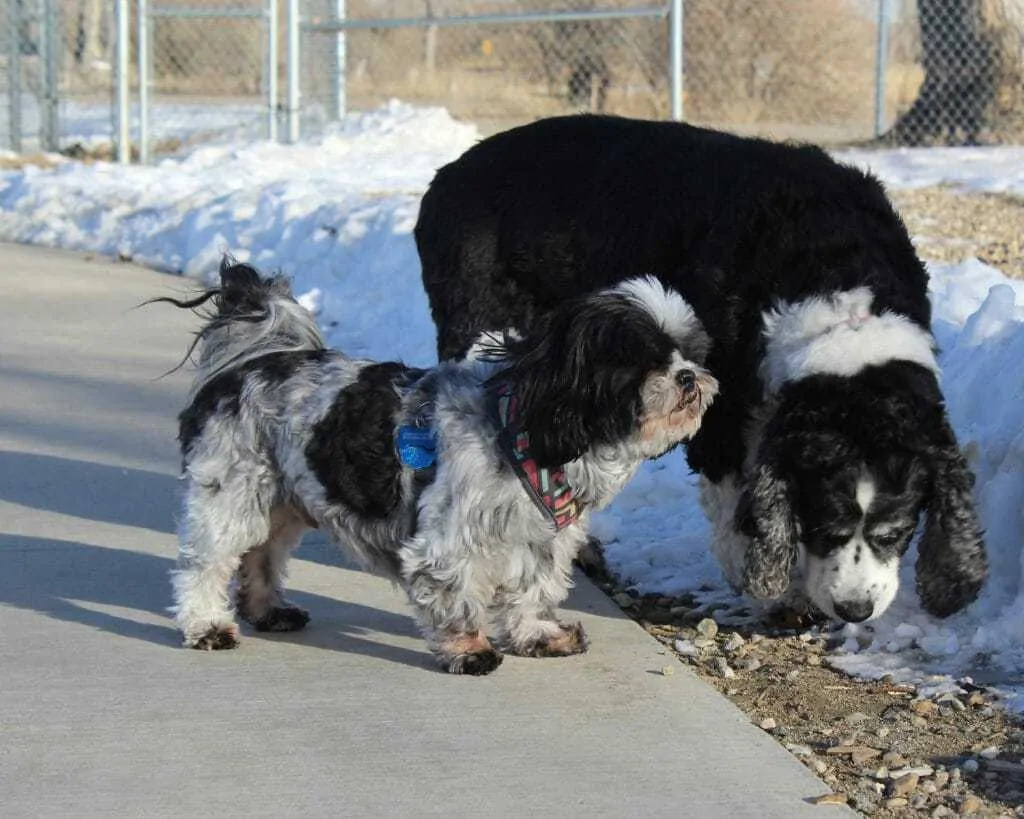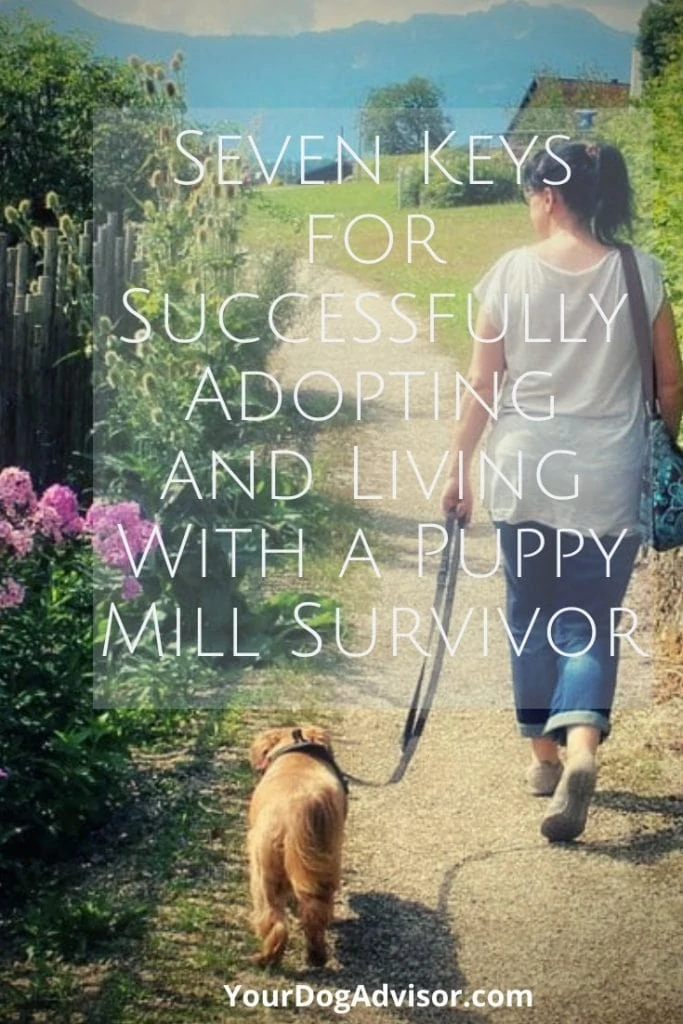Number 55. His number was his name – at least for the first three years of his life. Confined to a tiny wire cage since birth, the black-and-white Shih Tzu spent his early years as no dog should – but sadly, thousands of dogs do. Used for breeding, he, like most puppy mill dogs, lived with little human interaction and little medical care. By the time he came into rescue at the age of three, his teeth were so rotten, the sanctuary’s veterinarian had to pull 28.
As sad as this dog’s story is, the tales of other puppy mill survivors and the conditions in which they live are often much worse. Malnourished, bodies and minds exhausted from over-breeding and minimal medical care, lacking basic socialization and housebreaking skills, adopting a puppy mill survivor can be challenging. However, success is possible.
Contents
1. Where to adopt?
Many animal shelters across the country take in puppy mill survivors. You can inquire at your local animal shelter, humane society, or dog rescue organization to learn if they have received any such dogs. You can also look at rescues that specialize in rescuing and adopting these types of animals. For example, National Mill Dog Rescue in Colorado; Best Friends Animal Society in Utah; and Hearts United for Animals in Nebraska are organizations that bring in dogs from mill situations; all three allow adoptions outside their home state. Additionally, the American Society for the Prevention of Cruelty to Animals (ASPCA) liberates these creatures and helps shut down puppy mill operations; this national group also works with various dog rescues and animal shelters to help socialize and prepare mill survivors for adoption.
2. Have patience.
This is the most important factor after adoption. According to National Mill Dog Rescue, puppy mill survivors are often not socialized nor housetrained, and many of them have significant health issues, all of which can be challenges for adopters. Patiently work with your adopted puppy mill survivor, treating a milled adult just like you would an ordinary 8-week-old puppy. Your new friend is starting over, and just like potty-training a puppy, your adult mill-survivor has no clue about going to the bathroom outdoors instead of indoors. Nor does it have any idea that humans can be kind and loving, therefore, timidity and fear may be hurdles to cross. Most puppy mill dogs, prior to rescue, have no experience with a gentle touch nor do they know that laps and couches are enjoyable to sit on. Be willing to invest time, have patience, and possess a preserving spirit.
3. Be prepared for veterinary costs.
Most puppy mill survivors have had little to no vet care, except for what they received in rescue. Your new friend may have lingering health issues, or because of its confinement and lack of medical care, issues may crop up later. Be willing to invest in veterinary care, just as you must invest in your own health care when disease or illness affects you or a human family member. Dental, parasite, and eye issues are primary health problems in former puppy mill dogs. Because so many survivors are small dogs, grooming is another expense for which you will need to prepare and be willing to incur.
4. Have another furry friend as a mentor.
If you already have a dog in your home, that pet can serve as a guide and comfort for your puppy mill survivor. An older, laid back, easy-going dog can “show the ropes” to your new addition as well as serve as a friend. Remember, a puppy mill dog has never lived in a home – unless the rescue uses foster homes instead of on-site kennels. Therefore, everything about “home,” from televisions and radios to beds and furniture, is new. Your rescued friend will likely be scared, even if it has lived in a foster home – your home will be new as will all the elements, from children and grandchildren to your living room … and you. Therefore, having an established furry friend at the house can be a comfort and a mentor for your new dog.
5. Create a “safe space” for your adopted former mill dog.
A kennel or play pen, even a small room, can serve as a place of safety for your newly-adopted dog. Puppy mill survivors are accustomed to small spaces, and though putting such a dog in a kennel can seem cruel, your new furry friend may find such a space comforting and secure because of the familiarity. Or, the opposite could happen – your dog may freak out from memories of confinement and cruelty. A play pen, which is larger and from which your puppy mill survivor can see the happenings of the house, may be a good option. A small room is another alternative. Either way, provide cozy bedding and comforting elements, such as a soft toy, in the safe space.
6. Teach obedience commands – in a positive way.
Likely your adopted former mill dog will have had no training, no potty-training and no obedience training. To keep your furry friend safe, whether a puppy mill survivor or any dog you have, seven basic commands need to be taught: sit, stay, down, come, off, no, and heel. As you teach these, use positive reinforcement, including treats and praise, to not only engage your dog, but to show kindness – and patience. Such tactics will yield better results than yelling and other negative enforcement. A mill dog’s background revolves around cruelty and adversity; affirmation and forbearance need to be their “new normal,” including with obedience training.
7. Exercise your dog.
Can you imagine never experiencing grass, a walk, or a toy? That’s the story of puppy mill survivors. Many of them are afraid of yards, leashes, and toys because they’ve not seen or experienced them (again, for those who have been in foster care, they have started on those journeys). You may be the first person taking your puppy mill survivor on a walk or providing it with a toy. Just like with house training, take these endeavors slowly and with patience as you would with a young pup. Exercising you’re your dog instills a deeper bond between the two of you. Additionally, you will experience deep joy when you see your puppy mill survivor carrying its first toy and engaging in play as well as when your new friend discovers the fun of walking through the neighborhood, sniffing, exploring, and learning about its new world.
Challenges But Hope and Joy
The Puppy Mill Project estimates there are at least 10,000 puppy mills throughout America. Such operations, which seem prevalent especially in the midwestern states, affect thousands of canine lives.
There are many challenges to adopting a former puppy mill dog. Yet, providing a home to such creatures who have known only neglect and abuse is a joy and privilege. Realizing you have been instrumental in saving the dog from horrible living conditions and negligent care brightens the soul. Offering love and a home to a dog who has never experienced either provides a person a sense of purpose and strengthens one’s resolve to help end this cruel business.
Through rescue and adoption, puppy mills are shut down. Some of the dogs live their lives in sanctuaries, others are euthanized. Most who are rescued await a compassionate, patient human to provide them a chance of knowing what a safe home, a kind hand, and a caring heart are all about.
And #55? This former mill dog proudly carries the name of Jeremiah. He lives with me and my husband, and our adopted springer spaniel mix named Mary, his mentor and best friend. Our puppy mill survivor takes daily walks, enjoys weekend outings and long vacations with us, lives in a warm house with loving humans, and spends time in a big backyard. No more cage, no more breeding, no more fear, isolation or loneliness.
Additional Resource
National Mill Dog Rescue provides an excellent guidebook for potential puppy mill survivor fosters and adopters. Here is the link for downloading this important resource: http://milldogrescue.org/wp-content/uploads/2013/11/NMDR-From-Puppy-Mill-to-Pet.pdf

Jen Jones is a professional dog trainer and behavior specialist with more than 25 years of experience. As the founder of ‘Your Dog Advisor’ and the ‘Canine Connection’ rehabilitation center, she applies a holistic, empathetic approach, aiming to address root causes rather than merely treating symptoms.
Well known for her intuitive and compassionate approach, Jen adopts scientifically-proven, reward-based methods, encouraging positive reinforcement over punishment. Jen specializes in obedience training, behavior modification, and puppy socialization. Her innovative methods, particularly in addressing anxiety and aggression issues, have been widely recognized. Jen has worked with many of the world’s leading dog behaviorists and in her free time volunteers with local animal shelters and rescue groups.




